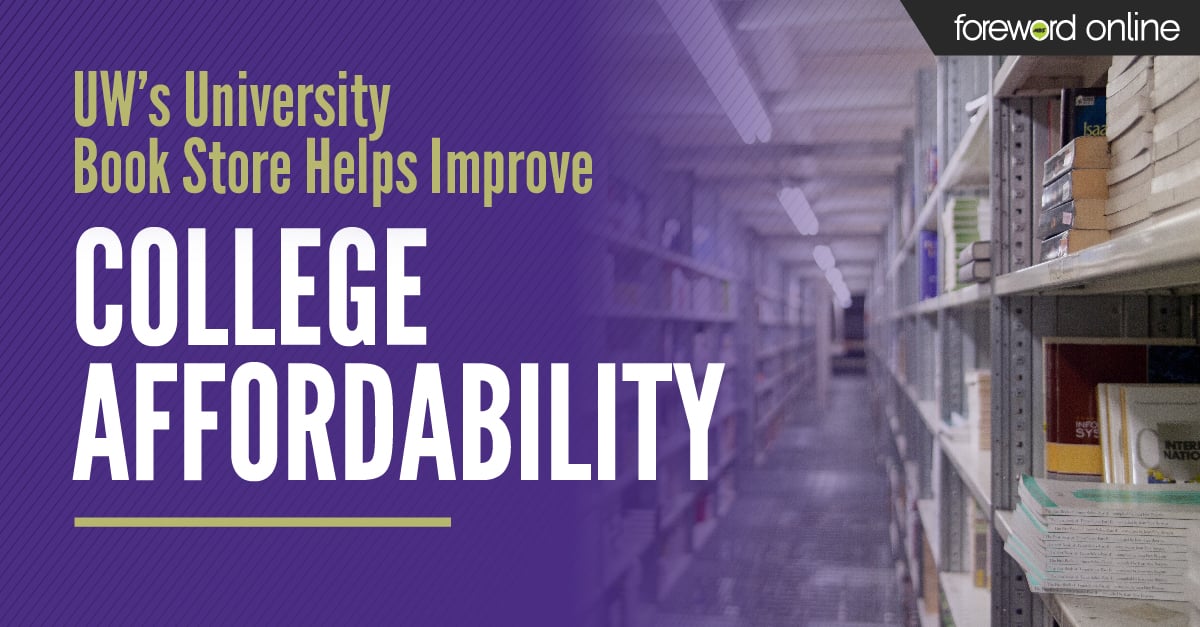The course material industry offers a variety of ways to lower textbook costs, but the most tried and true way is to provide students with greater access to used books. However, maximizing the number of used books your store has available can take a lot of time and resources. That’s why MBS created SimpleSource. SimpleSource gives stores an easy way to manage their entire wantlist process from wholesale inventory to marketplace sourcing.

Last year during an industry conference, the University of Washington's University Book Store (UBS) Course Materials Manager Matt Schleede first heard about MBS’ new ordering tool SimpleSource. He was interested to see how the new tool worked and how it could help streamline their textbook ordering process.
“I connected with our local rep and Lilli [Brooks]. She set up a demo and walked us through how the tool works. SimpleSource matched well with what our goals were for sourcing,” Schleede said. “We are fairly aggressive to begin with, so this tool gives us a nice way to scoop up more books at a discounted rate that we can pass onto students.”
The store used SimpleSource for the spring term 2019. They immediately noticed how easy it was to track their wantlist as it progressed. They could make changes to the cycles and parameters they set and access more MBS inventory while also sourcing from the marketplace.
We try to offer books for lower prices when we can, and this gives us an opportunity to do that, especially with the varying discounts tiers for MBS inventory.
“It’s been a really straight-forward and easy-to-use tool. We really like that we can choose our discounts and how much of the list to open up to the marketplace — or we don’t have to source from the marketplace. It’s completely up to us. We can see how the list is growing and what books we’re getting and the discounts we are getting on them and make our decisions from there,” UBS Buyer Courtney Russell said. “We’re getting more books in general than we have in the past. We are filling a lot more of our wantlist quantities, which is great because we want to be able to offer as many used books as we can to students. This is a really good tool to be able to do that. We also have control over what we’re sourcing, so we can figure out how to benefit both the store and the students.”
With SimpleSource, stores can access a broader discount range of wholesale books from MBS. Ms. Russell monitors her store’s wantlist fulfillment and sets their open-to-buy parameters to ensure they are maximizing the amount of inventory their store receives while still keeping the average cost down.
“I think we have chosen the 42 percent discount tier for most of our list to try to maximize the number of books we get,” Russell said. “SimpleSource has been a good opportunity for the store. We try to offer books for lower prices when we can, and this gives us an opportunity to do that, especially with the varying discounts tiers for MBS inventory.”
“I also like that it’s not all nonreturnable inventory like some of the other sourcing tools,” Schleede added. “When you are purchasing from the MBS inventory, you can return it and still get a little bit better discount than you would have.”
In addition to increasing the store’s used book inventory, Schleede and Russell also like that SimpleSource provides more flexibility than other industry tools. The store can set how long they want to leave their list with MBS and get their entire order in one shipment with one invoice.
“Another feature we like is that you can have it work for a day, a week, a month or six weeks. We choose and control that. I know a lot of other places don’t allow that flexibility,” Schleede said. “Like most stores, we shop multiple places for used books, but if you are going to leave your list with one company to work it continuously, I don’t know why SimpleSource wouldn’t be a fantastic option for your store. You’re sourcing from the largest wholesaler with the biggest inventory available. It makes no sense not to do it.”



![Navigating Complex Course Material Trends [White Paper]](https://foreword.mbsbooks.com/hubfs/Navigating-complex-course-material-trends-FO.jpg)
![3 Paths to Better Wantlist Fulfillment [Infographic]](https://foreword.mbsbooks.com/hubfs/10-28--3-Paths-to-Better-Wantlist-Fulfillment-%5BInfographic%5D.jpg)
